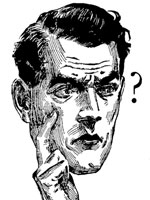Alabama: 8th-Grade Standards
AL.8 Standard: World History—Early Man to 1500
The study of world history in Grade 8 addresses the time period from prehistoric man to the 1500s.
8.1
-
8.1.1 Students will:
Explain how artifacts and other archaeological findings provide evidence of the nature and movement of prehistoric groups of people. (Geography, History)
-
Grade Level Example:
cave paintings, Ice Man, Lucy, fossils, pottery
-
-
8.1.2 Students will practice:
- Identifying the founding of Rome as the basis of the calendar established by Julius Caesar, which was used in early Western civilization for over a thousand years
- Identifying the birth of Christ as the basis of the Gregorian calendar used in the United States since its beginning and in most countries of the world today, signified by B.C. and A.D.
- Using vocabulary terms other than B.C. and A.D. to describe time
-
Grade Level Example:
B.C.E., C.E.
- Identifying terms used to describe characteristics of early societies and family structures
-
Grade Level Example:
monogamous, polygamous, nomadic
8.2
-
8.2.1 Students will:
Analyze characteristics of early civilizations in respect to technology, division of labor, government, calendar, and writings. (Economy, Geography, History, Civics and Government)
-
8.2.2 Students will practice:
- Comparing significant features of civilizations that developed in the Tigris-Euphrates, Nile, Indus, and Huang He River valleys
-
Grade Level Example:
natural environment, urban development, social hierarchy, written language, ethical and religious belief system, government and military institutions, economic systems
- Identifying on a map locations of cultural hearths of early civilizations
-
Grade Level Example:
Mesopotamia, Nile Valley
8.3
-
8.3.1 Students will:
Compare the development of early world religions, philosophies, and their key tenets. (History)
-
Grade Level Example:
Judaism, Hinduism, Confucianism, Taoism, Christianity, Buddhism, Islam, Greek and Roman gods
-
-
8.3.2 Students will practice:
- Identifying cultural contributions of early world religions and philosophies
-
Grade Level Example:
Judaism, Hinduism, Confucianism, Taoism, Christianity, Buddhism, Islam, Greek and Roman gods, Phoenicians
8.4
-
8.3.1 Students will:
Identify cultural contributions of Classical Greece, including politics, intellectual life, arts, literature, architecture, and science. (History, Civics and Government)
8.5
-
8.5.1 Students will:
Describe the role of Alexander the Great in the Hellenistic world. (Economics, Geography, History, Civics and Government)
-
Grade Level Example:
serving as political and military leader, encouraging cultural interaction, allowing religious diversity
-
-
8.5.2 Students will practice:
- Defining boundaries of Alexander the Great’s empire and its economic impact
- Identifying reasons for the separation of Alexander the Great’s empire into successor kingdoms
- Evaluating major contributions of Hellenistic art, philosophy, science, and political thought
8.6
-
8.6.1 Students will:
Trace the expansion of the Roman Republic and its transformation into an empire, including key geographic, political, and economic elements. (Economics, Geography, History, Civics and Government)
-
Grade Level Example:
expansion—illustrating the spread of Roman influence with charts, graphs, timelines, or maps
transformation—noting reforms of Augustus, listing effects of Pax Romana
-
-
8.6.2 Students will practice:
- Interpreting spatial distributions and patterns of the Roman Republic using geographic tools and technologies
8.7
-
8.7.1 Students will:
Describe the widespread impact of the Roman Empire. (Economics, Geography, History, Civics and Government)
-
Grade Level Example:
spread of Roman law and political theory, citizenship and slavery, architecture and engineering, religions, sculpture and paintings, literature, and the Latin language
-
-
8.7.2 Students will practice:
- Tracing important aspects of the diffusion of Christianity, including its relationship to Judaism, missionary impulse, organizational development, transition from persecution to acceptance in the Roman Empire, and church doctrine
- Explaining the role of economics, societal changes, Christianity, political and military problems, external factors, and the size and diversity of the Roman Empire in its decline and fall
8.8
-
8.8.1 Students will:
Describe the development of a classical civilization in India and China. (Geography, History)
-
Grade Level Example:
India—religions, arts and literature, philosophies, empires, caste system
China—religions, politics, centrality of the family, Zhou and Han Dynasties, inventions, economic impact of the Silk Road and European trade, dynastic transitions
-
-
8.8.2 Students will practice:
- Identifying the effect of the monsoons on India
- Identifying landforms and climate regions of China
-
Grade Level Example:
marking landforms and climate regions of China on a map
8.9
-
8.9. Students will:
Describe the rise of the Byzantine Empire, its institutions, and its legacy, including the influence of the Emperors Constantine and Justinian, and the effect of the Byzantine Empire upon art, religion, architecture, and law. (History, Civics and Government)
-
Grade Level Example:
Identifying factors leading to the establishment of the Eastern Orthodox Church
-
8.10
-
8.10. Students will:
Trace the development of the early Russian state and the expansion of its trade systems. (Economics, Geography, History, Civics and Government)
-
Grade Level Example:
rise of Kiev and Muscovy, conversion to Orthodox Christianity, movement of peoples of Central Asia, Mongol conquest, rise of czars
-
8.11
-
8.11. Students will:
Describe early Islamic civilizations, including the development of religious, social, and political systems. (Geography, History, Civics and Government)
-
Grade Level Example:
Tracing the spread of Islamic ideas through invasion and conquest throughout the Middle East, northern Africa, and western Europe
-
8.12
-
8.12. Students will:
Describe China’s influence on culture, politics, and economics in Japan, Korea, and Southeast Asia. (Economics, History, Civics and Government)
-
Grade Level Example:
culture—describing the influence on art, architecture, language, and religion
politics—describing changes in civil service economics—introducing patterns of trade
-
8.13
-
8.13.1. Students will:
Compare the African civilizations of Ghana, Mali, and Songhai to include their geography, religions, slave trade, economic systems, empires, and cultures. (Economics, Geography, History, Civics and Government)
-
8.13.2 Students will practice:
- Tracing the spread of language, religion, and customs from one African civilization to another
- Illustrating the impact of trade among Ghana, Mali, and Songhai
-
Grade Level Example:
using map symbols, interpreting distribution maps, creating a timeline
8.14
-
8.14.1. Students will:
Describe key aspects of pre-Columbian cultures in the Americas including the Olmecs, Mayans, Aztecs, Incas, and North American tribes. (Economics, Civics and Government)
-
Grade Level Example:
pyramids, wars among pre-Columbian people, religious rituals, irrigation, Iroquois Confederacy
-
-
8.14.2 Students will practice:
- Locating on a map sites of pre-Columbian cultures
-
Grade Level Example:
Mayan, Inca, Inuit, Creek, Cherokee
8.15
-
8.15.1. Students will:
Describe military and governmental events that shaped Europe in the early Middle Ages (600-1000). (Economics, History, Civics and Government)
-
Grade Level Example:
invasions, military leaders
-
-
8.15.2 Students will practice:
- Describing the role of the early medieval church
- Describing the impact of new agricultural methods on manorialism and feudalism
8.16
-
8.16.1. Students will:
Describe major cultural changes in Western Europe in the High Middle Ages (1000-1350). (Economics, Civics and Government)
-
Grade Level Example:
the Church, scholasticism, Crusades
-
-
8.16.2 Students will practice:
- Describing changing roles of church and governmental leadership
- Comparing political developments in France, England, and the Holy Roman Empire, including the signing of the Magna Carta
- Describing the growth of trade and towns resulting in the rise of the middle class
8.17
-
8.17.1. Students will:
Explain how events and conditions fostered political and economic changes in the late Middle Ages and led to the origins of the Renaissance. (Economics, Civics and Government)
-
Grade Level Example:
Crusades, Hundred Years’ War, Black Death, rise of middle class, commercial prosperity
-
-
8.17.2 Students will practice:
- Identifying changes in the arts, architecture, literature, and science in the late Middle Ages
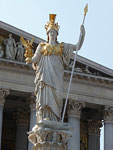

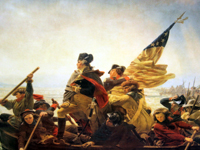
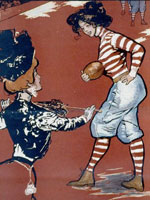

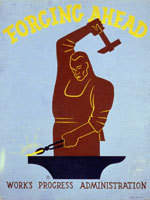
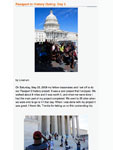
 That same year, an after-school group that is co-sponsored by myself and a friend from the National Park Service took a cross-country trip for Lincoln’s Bicentennial. I created another blog for the students to document their adventures and for friends and family back home to be able to find us. What was nice was that because I had been working with the blog in history class, my students were aware of how a blog works and were familiar with how to write for it and their audience. Each student was required to write three times for the blog during the course of our week-long adventure. Each night after our full day they would write on either paper or share the two laptops we brought for blogging. Before going to bed each night I would upload any remaining blog entries. The system proved effective for sharing our adventures and for students documenting their days. The site has also become a great way for Jen Epstein, my National Park Service co-organizer, to share what she is doing in schools for outreach. View it here:
That same year, an after-school group that is co-sponsored by myself and a friend from the National Park Service took a cross-country trip for Lincoln’s Bicentennial. I created another blog for the students to document their adventures and for friends and family back home to be able to find us. What was nice was that because I had been working with the blog in history class, my students were aware of how a blog works and were familiar with how to write for it and their audience. Each student was required to write three times for the blog during the course of our week-long adventure. Each night after our full day they would write on either paper or share the two laptops we brought for blogging. Before going to bed each night I would upload any remaining blog entries. The system proved effective for sharing our adventures and for students documenting their days. The site has also become a great way for Jen Epstein, my National Park Service co-organizer, to share what she is doing in schools for outreach. View it here: 


